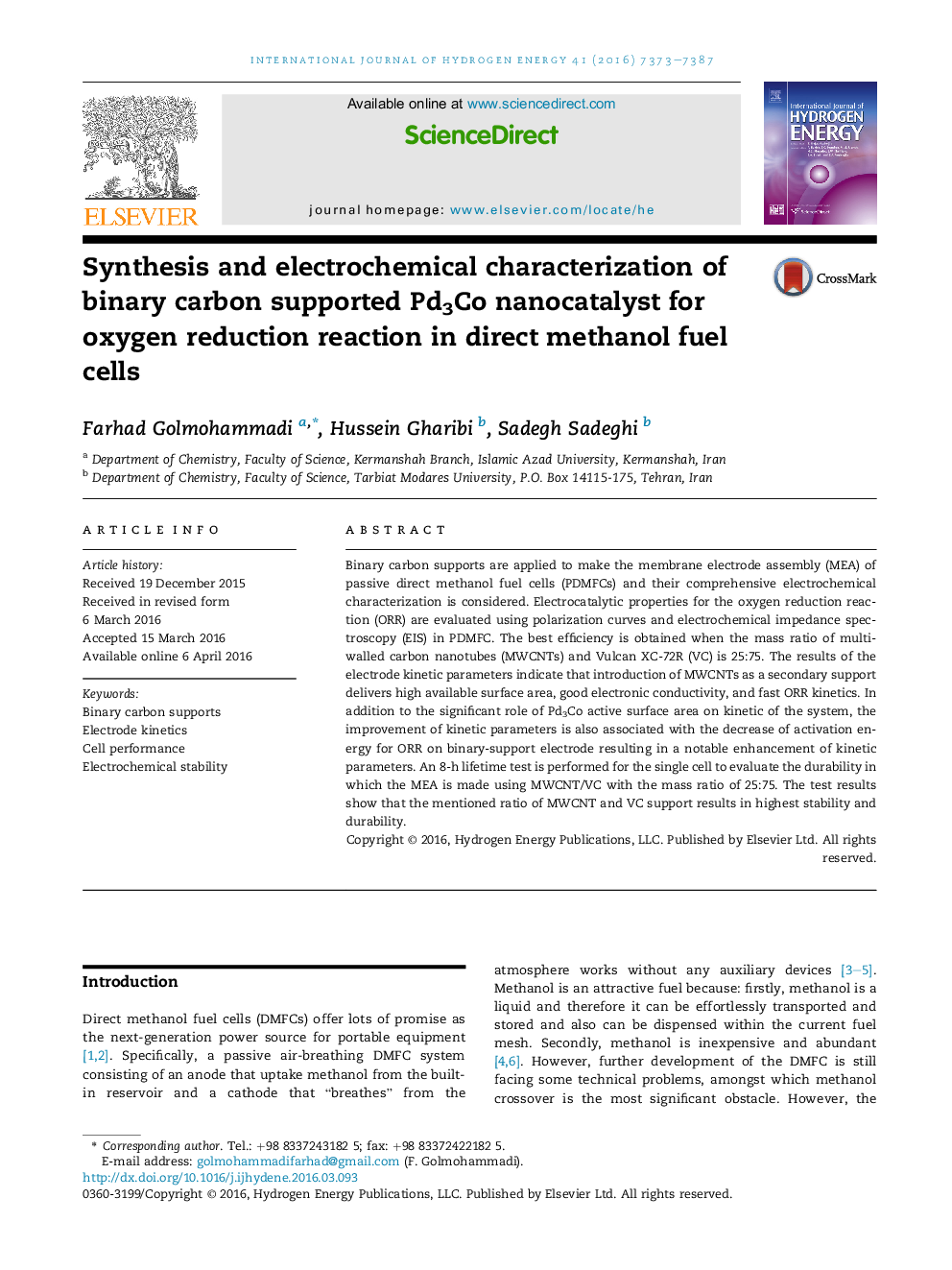| Article ID | Journal | Published Year | Pages | File Type |
|---|---|---|---|---|
| 1268689 | International Journal of Hydrogen Energy | 2016 | 15 Pages |
•ORR activity and stability Pd3Co on 25% MWCNT + 75% VC electrocatalyst was improved.•Combination of carbon materials enhances the current density of ORR significantly.•The synthesized catalyst can act as a promising substrate for Passive DMFC.•Maximum power density of 3.81 mW cm−2 at 0.30 V is observed on 25% MWCNT + 75% VC.
Binary carbon supports are applied to make the membrane electrode assembly (MEA) of passive direct methanol fuel cells (PDMFCs) and their comprehensive electrochemical characterization is considered. Electrocatalytic properties for the oxygen reduction reaction (ORR) are evaluated using polarization curves and electrochemical impedance spectroscopy (EIS) in PDMFC. The best efficiency is obtained when the mass ratio of multi-walled carbon nanotubes (MWCNTs) and Vulcan XC-72R (VC) is 25:75. The results of the electrode kinetic parameters indicate that introduction of MWCNTs as a secondary support delivers high available surface area, good electronic conductivity, and fast ORR kinetics. In addition to the significant role of Pd3Co active surface area on kinetic of the system, the improvement of kinetic parameters is also associated with the decrease of activation energy for ORR on binary-support electrode resulting in a notable enhancement of kinetic parameters. An 8-h lifetime test is performed for the single cell to evaluate the durability in which the MEA is made using MWCNT/VC with the mass ratio of 25:75. The test results show that the mentioned ratio of MWCNT and VC support results in highest stability and durability.
Graphical abstractFigure optionsDownload full-size imageDownload as PowerPoint slide
